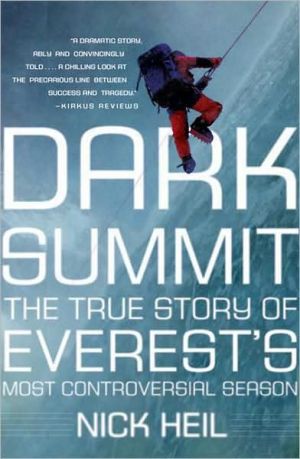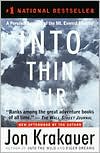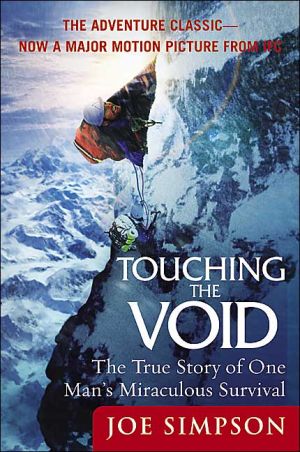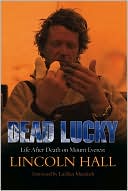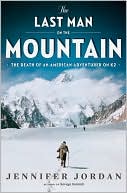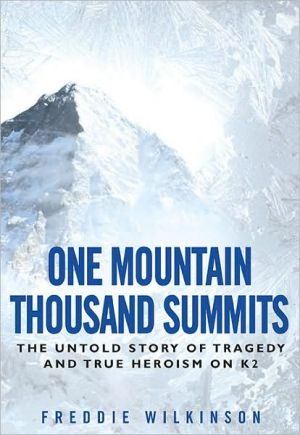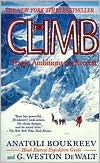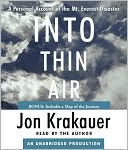Dark Summit: The True Story of Everest's Most Controversial Season
"A dramatic story, ably and convincingly told . . . A chilling look at the precarious line between success and tragedy."—Kirkus Reviews\ On May 15, 2006, a young British climber named David Sharp lay dying near the top of Mount Everest while forty other climbers walked past him on their way to the summit. A week later, Lincoln Hall, a seasoned Australian climber, was left for dead near the same spot. Hall’s death was reported around the world, but the next day he was found alive after...
Search in google:
In the tradition of Jon Krakauers Into Thin Air, Nick Heil recounts the harrowing story of the deadly and controversial 2006 climbing season on Mount Everest. Ben Malczewski - Library Journal The 2006 Mount Everest climbing season was only the second deadliest, but it was by far the most controversial. Eleven people perished; David Sharp died while 40 climbers walked by, and Lincoln Hall was left for dead but miraculously survived. Notably chronicled in Jon Krakauer's Into Thin Air and Anatoli Boukreev's The Climb, the 1996 season holds the ominous distinction as deadliest, but perhaps without any cautionary effect. Still, 1996 remains a turning point in the public perception of Everest, now seen as having become commercialized, overcrowded, and unregulated-a place where money had superseded skill. Heil (Men's Journal, Outside Magazine) tells the complete story of the 2006 season (using 1996 as a backdrop) by introducing Russell Brice-Everest's largest commercial operator-and by using the story of encountered but "abandoned" climber David Sharp as the impetus for investigating whether or not it should be every man for himself on the mountain.Ten days after Sharp died, Hall (White Limbo) was pronounced dead from poor acclimatization, and the news spread around the world. The next morning climbers discovered him sitting cross-legged on the summit ridge. Hall explains what brought him to Everest (for the second time); why climbers risk amputated digits, destroyed brain cells, and death; and what got him through that night sitting alone on the top of the world. Offering macro and micro perspectives of the same scenario, both authors acknowledge that priorities have deteriorated through selfish overpopulation but also argue that journalists have shed a selective light on these stories. At the end of the day, in an environment where each breathbreathed is more valuable than any word it can carry and simply being at that altitude is deadly, you can only be responsible for yourself. Recommended for all libraries.
Partial List of Teams and ClimbersPrologue 1Pt. I David Sharp1 Kathmandu 132 The North Side 463 Base Camp: Tibet 704 Advanced Base Camp 1005 The Northeast Ridge 134Pt. II Lincoln Hall and Thomas Weber6 High Camp 1617 The Second Step 1888 Dark Summit 208Epilogue 231Author's Note 249Source Notes 253Acknowledgments 259Index 261
\ From the Publisher“In this authoritative, colorful look at the grimmest Everest season in years, Dark Summit carries forward Outside magazine's formidable tradition of high alpine literature. Nick Heil is alive to Everest's majesty but fiercely skeptical of those hubristic souls who attempt to ‘conquer’ her. Through rock-solid reporting and vital prose, Heil leads us up into this rarefied world, step by hypoxic step.”—Hampton Sides, author of Ghost Soldiers and Blood and Thunder\ “Here is humanity itself, personified in exemplary fashion by Nick Heil, addressing the Everest culture's lack of compassion and coming up with the right answers. Dark Summit is an extraordinary tale, ribboned with wisdom and profound insight, delivered by a first-rate storyteller. I consider the book not a sequel to Krakauer's Into Thin Air, but an equal.”—Bob Shacochis, author of The Immaculate Invasion\ "Dark Summit illuminates the nuanced personalities of Everest's modern commercial age accurately, with neither heroic romanticism nor guile. Nick Heil takes a critical yet objective look at Everest and the community of Everest climbers, and then leaves you to pass judgment. If you couldn't put down Into Thin Air, you must read Dark Summit to understand what it means to climb Everest today and why anyone might accept the risk.”—Peter Athans, seven-time Everest summiter and The North Face athlete\ \ \ \ \ \ Library JournalThe 2006 Mount Everest climbing season was only the second deadliest, but it was by far the most controversial. Eleven people perished; David Sharp died while 40 climbers walked by, and Lincoln Hall was left for dead but miraculously survived. Notably chronicled in Jon Krakauer's Into Thin Air and Anatoli Boukreev's The Climb, the 1996 season holds the ominous distinction as deadliest, but perhaps without any cautionary effect. Still, 1996 remains a turning point in the public perception of Everest, now seen as having become commercialized, overcrowded, and unregulated-a place where money had superseded skill. Heil (Men's Journal, Outside Magazine) tells the complete story of the 2006 season (using 1996 as a backdrop) by introducing Russell Brice-Everest's largest commercial operator-and by using the story of encountered but "abandoned" climber David Sharp as the impetus for investigating whether or not it should be every man for himself on the mountain.\ Ten days after Sharp died, Hall (White Limbo) was pronounced dead from poor acclimatization, and the news spread around the world. The next morning climbers discovered him sitting cross-legged on the summit ridge. Hall explains what brought him to Everest (for the second time); why climbers risk amputated digits, destroyed brain cells, and death; and what got him through that night sitting alone on the top of the world. Offering macro and micro perspectives of the same scenario, both authors acknowledge that priorities have deteriorated through selfish overpopulation but also argue that journalists have shed a selective light on these stories. At the end of the day, in an environment where each breathbreathed is more valuable than any word it can carry and simply being at that altitude is deadly, you can only be responsible for yourself. Recommended for all libraries.\ —Ben Malczewski\ \ \ \ Kirkus ReviewsFreelance journalist Heil, a former climbing instructor and Outside magazine editor, chronicles the deadly 2006 season on Everest, during which 11 climbers perished. Adding to the growing number of cautionary books about assaying the world's highest peak, the debut author focuses on two deaths and one miraculous rescue. Less accusatory than others who have recently peered up Everest, most notably Michael Kodas (High Crimes, 2008), Heil emphasizes the dangers that climbers inevitably assume and the near impossibility of effecting a rescue from high on the mountain. He is sympathetic to commercial operators like Russell Brice, who charges $40,000 for a "fully equipped" Everest climb but also, Heil argues, provides a margin of safety that many discount outfitters do not. Brice was vilified in 2006 when he ordered some of his summit team to abandon solo climber David Sharp, who was found near death atop the mountain. Brice's Sherpas tried in vain to rouse Sharp, but he was unresponsive and severely frostbitten. A rescue was nearly impossible, Brice contended, and would have probably cost the lives of the rescue team. But Sharp's death became even more controversial when another severely debilitated climber, Lincoln Hall, survived being left overnight in Everest's Death Zone. Heil agrees with those who felt that Sharp knowingly took severe risks and probably could not have been saved. He is less sanguine about the death that same week of German climber Thomas Weber, quoting several witnesses who claim that Weber's guide did little to help the stricken climber when he lost his vision atop the mountain and collapsed. The author sprinkles a smattering of Everest history into his clear-eyed ifless-than-gripping account, and while providing little that is groundbreaking, he does create a worthy primer on Everest mountaineering and a chilling look at the precarious line between success and tragedy. A dramatic story, ably and convincingly told. Agent: Sloan Harris/ICM\ \
